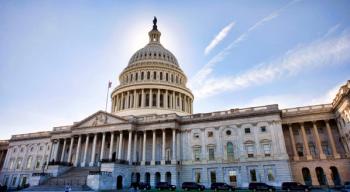
Medicare Part D plans control drug spending
Medicare Part D plans apply a range of tools to control costs and provide quality care.
A recent report from the Kaiser Family Foundation (KFF) documents how government outlays for Part D have been about 30% lower than originally projected by the Congressional Budget Office in 2003, during a period when overall Medicare spending has skyrocketed. The savings arise from a number of factors, said analyst Jack Hoadley of Georgetown University at a KFF briefing: lower enrollment in Part D than expected; a general slowdown in total spending on prescription drugs; fewer new drugs; and, most notably, a huge rise in generic utilization.
Karen Ignagni, president of America's Health Insurance Plans (AHIP), credited the savings to the ability of Part D plans to apply a range of tools to drug utilization, including tiered formularies. Even economist Marilyn Moon, an advocate for consumer protection, acknowledged that private plans have been able to use financial incentives to push beneficiaries into generics, which would be hard for the federal government to do.
Part D plans have "a very good deal," according to Moon, because the program's "donut hole" structure relieves insurers from covering high-cost patients. The program's reinsurance system, plus subsidies for seniors also on Medicaid, reduce pressure on plans to manage spending on high-cost medicines. The approval of more costly critical therapies, though, could raise overall spend, prompting further changes in benefit design.
MODEL FOR COMPETITION
A broader policy issue is whether the ability of drug plans to offer choice while managing costs provides a model for shifting the entire Medicare program to a "premium support" system, as advocated by Republicans. Instead of the current fee-for-service, government-run health program, conservatives want to provide seniors with a voucher to purchase private coverage.
But market competition might not be responsible for lower Part D spending, according to Hoadley, noting that high initial cost estimates and lower drug trends might be more responsible for savings.
Yet former Health and Human Services Secretary Mike Leavitt, now health advisor to Mitt Romney, regards Part D as a model for a reformed Medicare system. Conservative analyst James Carpetta credits Part D's success on the ability of plans to offer many options, noting that reasonable government oversight of the program, with rules governing plan bidding and basic drug coverage, still provides flexibility for changes over time.
Jill Wechsler, a veteran reporter, has been covering Capitol Hill since 1994.
Newsletter
Get the latest industry news, event updates, and more from Managed healthcare Executive.





















































